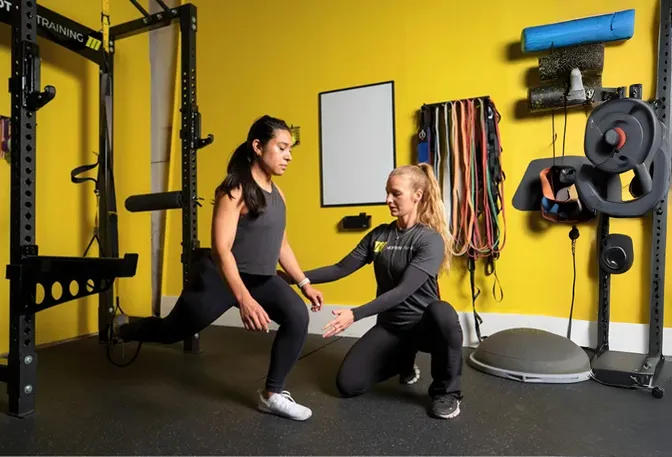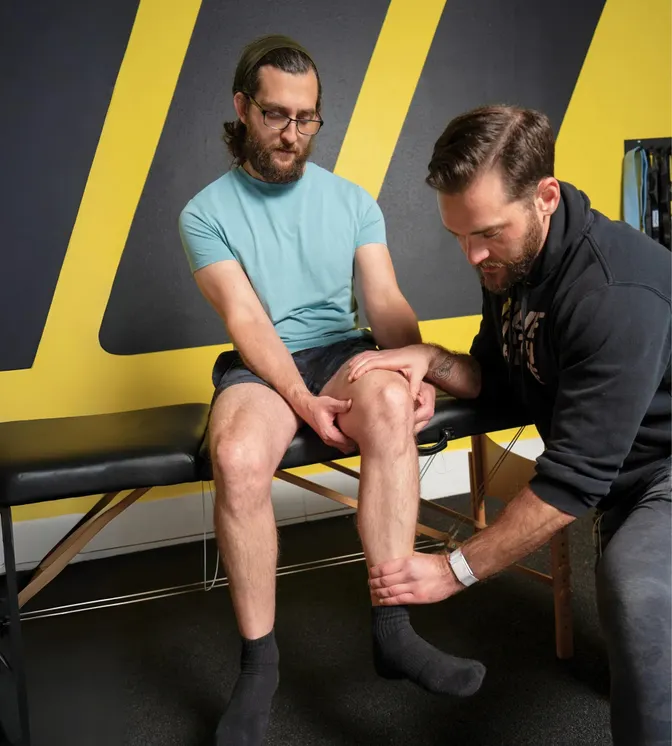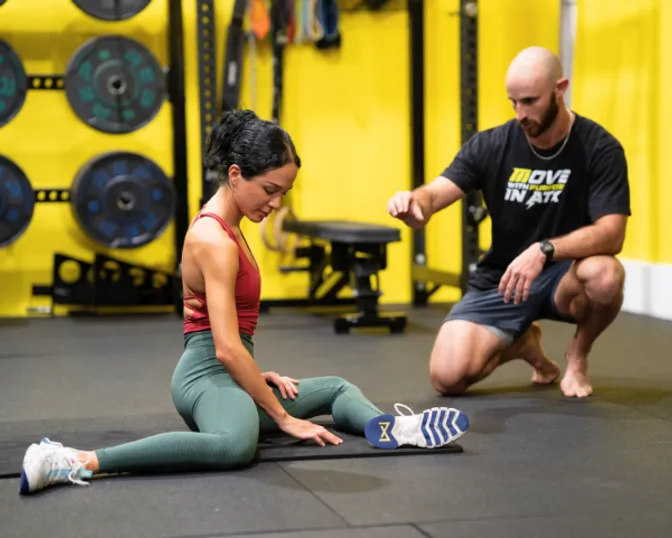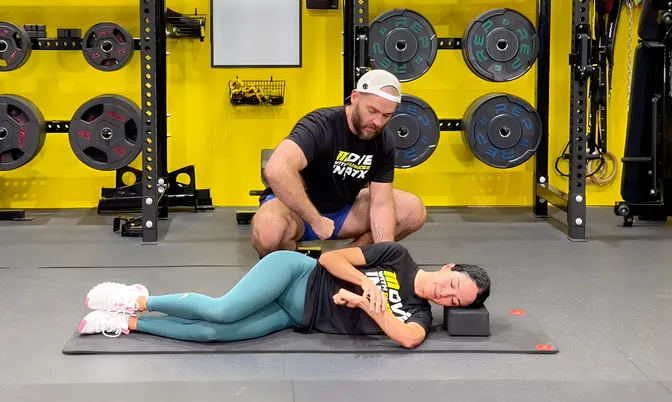Redefining Stretching in Austin: Why It Matters
July 3, 2025 | Stretching
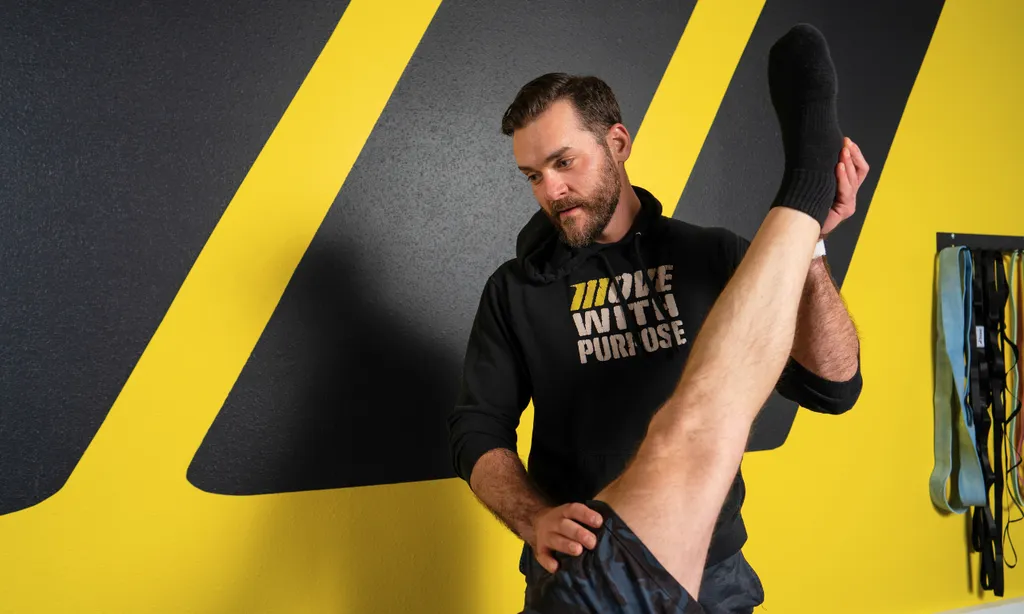
In Austin, stretching has become a commodity—sold in strip-mall studios, packaged into 25-minute sessions, and delivered by people with no real understanding of the body’s complexity. But at Motive Training, we take a different route.
We don’t just stretch muscles. We teach people how to move—how to access and control their joints, how to build resilience through tension, and how to develop long-term flexibility that doesn’t disappear the moment they stand up. That’s why we’re redefining what stretching means in Austin—and why most “stretch clinics” are missing the point entirely.
The Evolution of Stretching (And Where It Went Wrong)
Stretching used to be simple: touch your toes, hold it for 30 seconds, and hope your hamstrings feel looser the next day. Over time, this approach got dressed up in new packaging—assisted stretch chains like StretchLab or boutique recovery studios with catchy names and minimal credentials.
The problem? Most of these methods still rely almost entirely on passive stretching, which does nothing to improve your ability to control a new range of motion. Worse, they rarely explain why your body feels tight or how to change it. You get pulled around for 25 minutes and feel good—for a few hours. But the root problem? Still there.
Why Austin Needed a New Definition of Stretching
Austin is one of the most movement-forward cities in the country. With its parks, trails, climbing gyms, and yoga culture, it’s no surprise that stretching is in demand. But demand doesn’t equal quality.
We’ve had dozens of clients walk into Motive Training after months at local stretching franchises, confused about why their hamstrings still hurt or their shoulders won’t rotate. The answer is simple: if you’re not training your brain and nervous system to control new ranges of motion, you’re not actually improving mobility.
We’re here to fix that. And we start by flipping the script.
Stretching That Actually Works: What We Do Differently
At Motive Training, we focus on active mobility. That means we train flexibility the same way we train strength—through controlled, progressive, intentional effort. You learn how to contract, rotate, and stabilize within your end ranges, not just hang out there and hope something improves.
Every session is backed by assessment. We look at joint limitations, movement quality, and tissue control using tools like the Functional Range Assessment. From there, we build a plan that addresses your unique restrictions with proven methods like PAILs/RAILs, end-range strength work, and Controlled Articular Rotations (CARs).
This is the difference between “being stretched” and learning how to move.
Passive Stretching Feels Good—But It’s Not the Fix
Let’s be clear: passive stretching isn’t harmful in isolation. It just doesn’t do what most people think it does.
Stretch studios often sell the illusion of progress. You’ll feel looser immediately after a session because someone helped you relax into a range. But you didn’t earn that range. And because your nervous system didn’t build ownership over that new position, your body will return to its default pattern by the next morning.
Compare that to a well-executed KINSTRETCH class or an input session where you actively challenge your end range. The goal isn’t to feel good for an hour—it’s to move better for the rest of your life. That’s the kind of stretching we care about.
To understand this more deeply, check out Stretching is Training—a breakdown of why flexibility training should be loaded and intentional, not lazy and passive.
Why Stretch Studios in Austin Fall Short
We’re not here to call out individual businesses—but let’s be honest: StretchLab is the poster child for what’s gone wrong in the industry. Their model prioritizes convenience, not results. Their “flexologists” aren’t trained in biomechanics, joint assessment, or injury mitigation. They’re following scripts, not solving problems.
If your flexibility routine doesn’t start with an assessment or involve any strength input, it’s incomplete at best—and harmful at worst.
If you’ve ever asked, “Should You Use StretchLab?”—read our breakdown before you go.
Stretching Should Be Empowering
True mobility training teaches you how to solve your own problems. That’s what we do with KINSTRETCH Online and in-person classes. We don’t stretch you. We give you the tools to understand your joints, strengthen your ranges, and move with confidence—without relying on someone else to do it for you.
This shift from dependency to ownership is where real transformation happens.
Ready to Redefine Stretching for Yourself?
If you live in Austin and you’re tired of chasing temporary fixes, it’s time to upgrade your approach. Start by reading our guide on The Importance of Joint Rotation, or explore how Functional Range Conditioning can change the way you think about flexibility and control.
Then, take action:
- Book a Functional Range Assessment to understand where your mobility is limited.
- Join our in-person or online KINSTRETCH classes.
- Explore the full philosophy behind our mobility coaching in Austin.
Your body doesn’t need another passive stretch.
It needs a plan.
Let me know if you’d like a short CTA or email teaser to pair with this.
Written by
Brian Murray, FRA, FRSC
Founder of Motive Training
We’ll teach you how to move with purpose so you can lead a healthy, strong, and pain-free life. Our headquarters are in Austin, TX, but you can work with us online by signing up for KINSTRETCH Online or digging deep into one of our Motive Mobility Blueprints.

